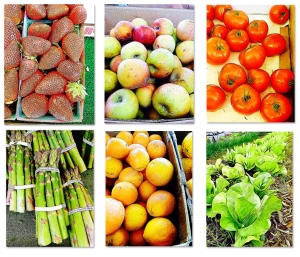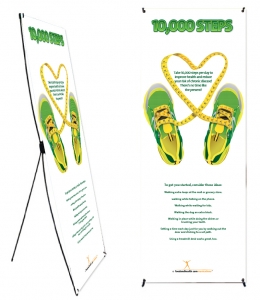3 Tips for Summer Survival
Summer is officially here, and as the temperatures climb, we wanted to share a few strategies to help your clients make the most of the summer while fostering healthful habits. So without further ado, here are three great summer survival tips...Summer Survival Tip #1: Get Active and Hydrate Right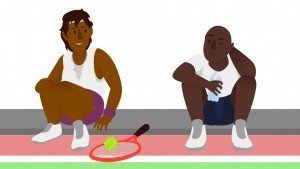 It's so much easier to get out and exercise when the weather is gorgeous. In order to craft a workout plan that's sustainable, especially if you're new to exercise, it's wise to start slowly and keep working steadily.There are lots of opportunities to get active in the summer. Consider joining an adult sport league (ultimate frisbee, tennis, and soccer are especially fun in the summer months), playing games in the park, going for a jog, finding fun hikes, signing up for a 5k, trying outdoor yoga, or whatever floats your boat.As you exercise outside, be sure to hydrate correctly. Nine times out of ten, that means drinking water. Remember, MyPlate advises people to "choose water instead of sugary drinks" and the Dietary Guidelines for Americans insist that people should "reduce intake of sugar-sweetened beverages [because...] sugar-sweetened beverages provide excess calories and few essential nutrients to the diet." When you're exercising, it's often wisest to choose water instead of sugary drinks like soda or sport beverages.Yes, sport drinks do offer electrolytes, but when exactly do you need them? Lynn Grieger, RDN, CDE, CPT, CWC recommends that people "Use sports drinks only during and after exercise that lasts longer than 60 minutes. Water offers everything [most people] need for shorter workouts."When it comes to hydrating while you work out, consider this advice from the American College of Sports Medicine. "During exercise, athletes should start drinking early and at regular intervals in an attempt to consume fluids at a rate sufficient to replace all the water lost through sweating (i.e., body weight loss), or consume the maximal amount that can be tolerated."So get out there and get active, and bring that water bottle with you!Summer Survival Tip #2: Go for Fresh Fruits and Vegetables
It's so much easier to get out and exercise when the weather is gorgeous. In order to craft a workout plan that's sustainable, especially if you're new to exercise, it's wise to start slowly and keep working steadily.There are lots of opportunities to get active in the summer. Consider joining an adult sport league (ultimate frisbee, tennis, and soccer are especially fun in the summer months), playing games in the park, going for a jog, finding fun hikes, signing up for a 5k, trying outdoor yoga, or whatever floats your boat.As you exercise outside, be sure to hydrate correctly. Nine times out of ten, that means drinking water. Remember, MyPlate advises people to "choose water instead of sugary drinks" and the Dietary Guidelines for Americans insist that people should "reduce intake of sugar-sweetened beverages [because...] sugar-sweetened beverages provide excess calories and few essential nutrients to the diet." When you're exercising, it's often wisest to choose water instead of sugary drinks like soda or sport beverages.Yes, sport drinks do offer electrolytes, but when exactly do you need them? Lynn Grieger, RDN, CDE, CPT, CWC recommends that people "Use sports drinks only during and after exercise that lasts longer than 60 minutes. Water offers everything [most people] need for shorter workouts."When it comes to hydrating while you work out, consider this advice from the American College of Sports Medicine. "During exercise, athletes should start drinking early and at regular intervals in an attempt to consume fluids at a rate sufficient to replace all the water lost through sweating (i.e., body weight loss), or consume the maximal amount that can be tolerated."So get out there and get active, and bring that water bottle with you!Summer Survival Tip #2: Go for Fresh Fruits and Vegetables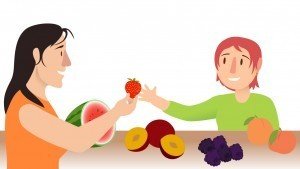 Lots of produce is at its peak during the summer months, so what better time is there to stock up and try new things?It's especially easy to try new fruits and vegetables at farmers' markets or farm stands. The farmers at these locations often offer unique foods like kohlrabi or purple carrots, which are harder to find in conventional grocery stores. Sometimes all it takes to expand your list of favorite fruits and veggies is an introduction to a new and fun food, and stopping by a farmers' market or farm stand is a great place to start.Another great way to explore new foods is by talking with the farmers who run the market booths or farm stands. These people can recommend fruits and vegetables based on your tastes and flavor preferences. Plus, many farmers can recommend ways to prepare your purchases to maximize flavor, texture, and palatability. Oh, and did I mention that there are often samples? Farmers like to offer samples of various foods at their booths during farmers' markets, and if you don't see a sample of something you'd like to try, it never hurts to ask. Many times the people manning a booth or farm stand would be delighted to let you try something they're selling.So use this summer to try new fresh fruits and vegetables!Summer Survival Tip #3: Be Safe in the Sun
Lots of produce is at its peak during the summer months, so what better time is there to stock up and try new things?It's especially easy to try new fruits and vegetables at farmers' markets or farm stands. The farmers at these locations often offer unique foods like kohlrabi or purple carrots, which are harder to find in conventional grocery stores. Sometimes all it takes to expand your list of favorite fruits and veggies is an introduction to a new and fun food, and stopping by a farmers' market or farm stand is a great place to start.Another great way to explore new foods is by talking with the farmers who run the market booths or farm stands. These people can recommend fruits and vegetables based on your tastes and flavor preferences. Plus, many farmers can recommend ways to prepare your purchases to maximize flavor, texture, and palatability. Oh, and did I mention that there are often samples? Farmers like to offer samples of various foods at their booths during farmers' markets, and if you don't see a sample of something you'd like to try, it never hurts to ask. Many times the people manning a booth or farm stand would be delighted to let you try something they're selling.So use this summer to try new fresh fruits and vegetables!Summer Survival Tip #3: Be Safe in the Sun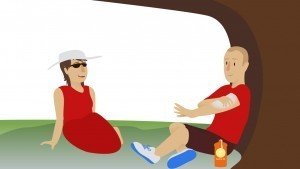 Playing in the sun in the summer can be a double-edged sword. On the one hand, most people don't get enough vitamin D, which your body makes when it is exposed to sunlight. On the other hand, too much sun exposure can increase the risk of skin cancer. So what should you do?Let's take a look at each side of the coin.According to the Dietary Guidelines for Americans, "dietary intakes of [...] vitamin D [...] are low enough to be of public health concern for both adults and children." Since "Vitamin D is unique in that sunlight on the skin enables the body to make vitamin D" (source), getting out in the sun can help you get enough of this vital nutrient.Dr. Stephen I. Katz, director of the National Institute of Health's National Institute of Arthritis and Musculoskeletal and Skin Diseases, has revealed that most people need only 10-15 minutes of sun exposure to get enough vitamin D for the day. After that, the focus should shift to protecting yourself from skin cancer.
Playing in the sun in the summer can be a double-edged sword. On the one hand, most people don't get enough vitamin D, which your body makes when it is exposed to sunlight. On the other hand, too much sun exposure can increase the risk of skin cancer. So what should you do?Let's take a look at each side of the coin.According to the Dietary Guidelines for Americans, "dietary intakes of [...] vitamin D [...] are low enough to be of public health concern for both adults and children." Since "Vitamin D is unique in that sunlight on the skin enables the body to make vitamin D" (source), getting out in the sun can help you get enough of this vital nutrient.Dr. Stephen I. Katz, director of the National Institute of Health's National Institute of Arthritis and Musculoskeletal and Skin Diseases, has revealed that most people need only 10-15 minutes of sun exposure to get enough vitamin D for the day. After that, the focus should shift to protecting yourself from skin cancer. So, how can you reduce your skin cancer risk?According to the Centers for Disease Control and Prevention (CDC), it's especially important to wear sunscreen, cover up, or stay inside between the hours of 10 am and 4 pm during Daylight Savings Time, because that's when UV rays are at their most dangerous. It's also wise to wear hats, sunglasses, and sunscreen when you're outside, seeking shade whenever possible. This will reduce your risk of skin cancer.The bottom line? Seek balance! Get enough vitamin D, then take steps to reduce your risk of skin cancer, all summer long.Here's a free PDF handout that you can offer your clients, so that they too can have the best summer ever!
So, how can you reduce your skin cancer risk?According to the Centers for Disease Control and Prevention (CDC), it's especially important to wear sunscreen, cover up, or stay inside between the hours of 10 am and 4 pm during Daylight Savings Time, because that's when UV rays are at their most dangerous. It's also wise to wear hats, sunglasses, and sunscreen when you're outside, seeking shade whenever possible. This will reduce your risk of skin cancer.The bottom line? Seek balance! Get enough vitamin D, then take steps to reduce your risk of skin cancer, all summer long.Here's a free PDF handout that you can offer your clients, so that they too can have the best summer ever!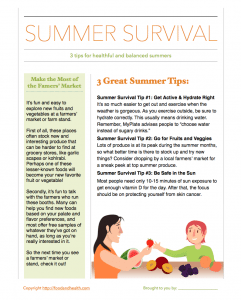 And did you know that members get even more? Check out the post More Tips for Summer Survival for a guide to summer food safety and ways to sneak in exercise while on vacation. Oh, and they also get this amazing handout!
And did you know that members get even more? Check out the post More Tips for Summer Survival for a guide to summer food safety and ways to sneak in exercise while on vacation. Oh, and they also get this amazing handout!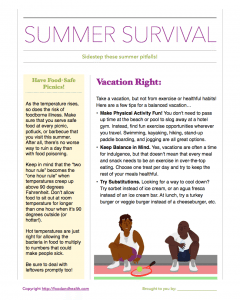 But wait, there's more! In the Nutrition Education Store, that is! Check out these fantastic summer resources...
But wait, there's more! In the Nutrition Education Store, that is! Check out these fantastic summer resources...